| A | B |
|---|
| Upper Fibers of Trapezius | Identify the muscle that is colored Red,  |
| Levator Scapulae | Identify the muscle that is colored yellow,  |
| Pectoralis Minor | This is the AG muscle testing position for:, 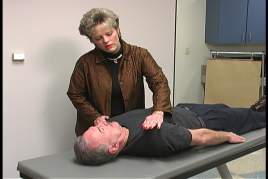 |
| Rhomboid Major & Minor | This is the AG muscle testing position for:, 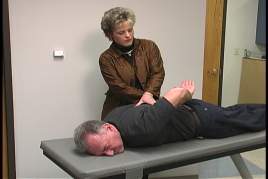 |
| Group MMT -Scapular Retraction | This is the AG muscle testing position for:, 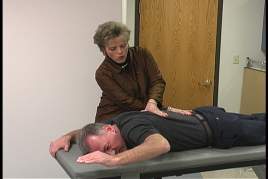 |
| Middle Trapezius | Identify this muscle, 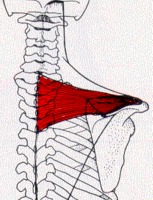 |
| Lower Trapezius | Identify this muscle, 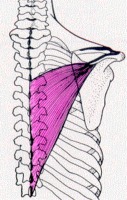 |
| Serratus Anterior | Identify this muscle,  |
| Pectoralis Minor | Identify the muscle that is colored brown,  |
| Rhomboid Minor | Identify the muscle colored yellow,  |
| Rhomboid Major | Identify the muscle colored red,  |
| Sternoclavicular Joint (SC) | The anterior and medial joint of the shoulder girdle is the: |
| 3 df - the movements are protraction/retraction, elevation/depression and upward/downward rotation | How many degrees of freedom are present at the SC jt? Name the movements. |
| Acromioclavicular Joint (AC) | Name the lateral and slightly superior joint of the shoulder girdle |
| Scapulothoracic Joint (ST) | Name the posterior and medial joint of the shoulder girdle |
| Scapular Elevation | Sitting with arms down at side, shrug shoulder - This is the group AG testing position for: |
| Scapular Elevation | This is the AG group muscle testing position for:,  |
| Scapular Elevation | Prone with head facing downward. Therapist supports weight of shoulder while patient moves shoulder toward the ear. This is the GE group muscle testing positon for: |
| Upper Trapezius | Sitting with arms down at side, shrug shoulder, rotate neck toward opposite shoulder and laterally flex the neck. This is the individual AG test position for: |
| Upper Trapezius | External Occipital Protuberance, superior nuchal line, spinous process of C7 is the origin for: |
| Upper Trapezius | Lateral 1/3 of the clavicle and the acromion is the insertion for: |
| Levator Scapulae | Transverse Process of C1-C4 is the origin for: |
| Levator Scapulae | Superior angle and medial border of the scapula is the insertion for: |
| Scapular Depression | Prone, arm overhead to approximately 145 degrees of abduction with thumb pointing toward the ceiling. is the AG group test position for: |
| Lower Trapezius | Spinous process of T6-T12 is the origin for: |
| Lower Trapezius | Medial spine of the scapula is the insertion for: |
| Latissimus Dorsi | Spinous process of T7 –T12, spinous process of lumbar vertebra, sacrum, iliac crest, and thoracolumbar fascia is the origin for: |
| Latissimus Dorsi | intertubercular groove of the humerus, medial crest of the greater tubercle and inferior angle of the scapula is the insertion for: |
| Latissimus Dorsi | Prone, patient lifts weight of arm off of mat and depress arm toward feet is the test position for: |
| Latissimus Dorsi | Prone, arm at side supported by therapist, patient moves scapula downward is the GE test position for: |
| Scapular Protraction | Sitting, 130 degrees of flexion, “raise your arm forward toward my hand and hold, don’t let me push it down and back.” This is the AG group test position for: |
| Serratus Anterior | lateral borders of ribs 1-9 is the origin for: |
| Serratus Anterior | Medial border of the scapula anterior surface is the insertion for: |
| Scapular Protraction | Sitting, therapist places arm in 130 degrees of flexion. Patient moves horizontally forward toward target. This is the GE group testing position for: |
| Pectoralis Minor | Ribs 2-5 is the origin for: |
| Pectoralis Minor | Coracoid process of the scapula is the insertion for: |
| Middle Trapezius | Spinous process of T1-T5 is the origin for: |
| Middle Trapezius | Lateral spine of the scapula is the insertion for: |
| Rhomboids | Prone, head rotated to either side for comfort, patient places arm in small of back. This is the AG test position for: |